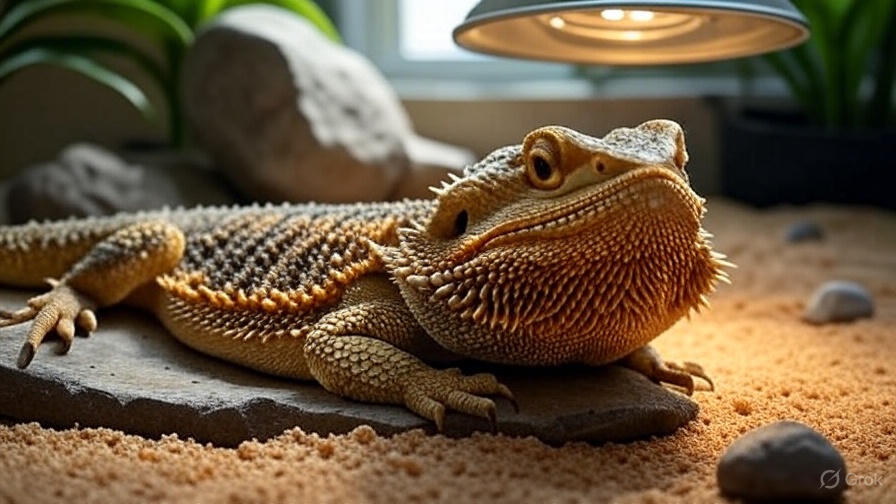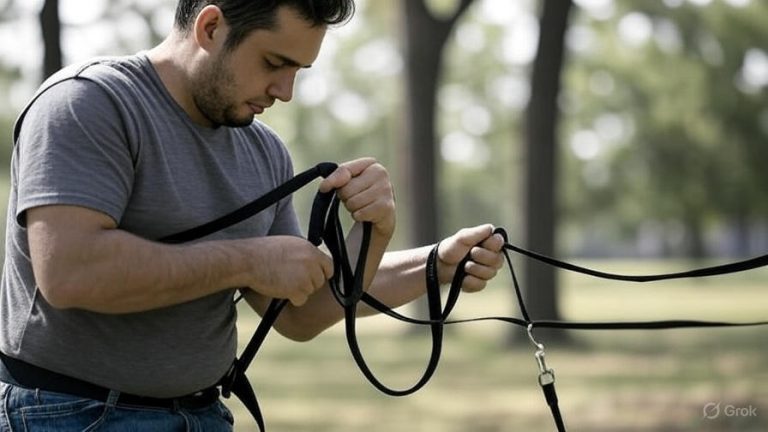How to Setup the Perfect Basking Area for Your Bearded Dragon?
Your bearded dragon’s basking area serves as the cornerstone of their health and happiness. These magnificent reptiles rely on external heat sources to regulate their body temperature, digest food properly, and maintain their overall well-being. Creating the ideal basking spot requires careful attention to temperature, lighting, positioning, and substrate materials.
Why Your Bearded Dragon Needs a Proper Basking Area
Bearded dragons are cold-blooded creatures that depend on thermoregulation to survive. In their natural Australian habitat, they climb onto rocks, logs, and elevated surfaces to absorb heat from the sun. This behavior allows them to reach optimal body temperatures for essential biological processes.
Without adequate basking opportunities, your dragon may experience serious health complications. Poor digestion, weakened immune systems, and metabolic bone disease can all result from inadequate thermal regulation. The basking area essentially becomes your pet’s personal sun, providing the warmth they need to thrive in captivity.
Temperature gradients within the enclosure allow your dragon to move between warm and cool areas as needed. This natural behavior helps them maintain proper body temperature throughout the day. During active periods, they seek out heat for energy and digestion. When they need to cool down, they retreat to shadier spots within their habitat.
Essential Temperature Requirements
The basking spot should reach temperatures between 95-110°F (35-43°C) for adult bearded dragons. Juvenile dragons require slightly higher temperatures, ranging from 100-115°F (38-46°C). These temperatures must be measured at the basking surface where your dragon will actually rest, not at the heat source itself.
Surface temperatures matter more than air temperatures when creating effective basking areas. Your dragon absorbs heat through direct contact with warm surfaces, mimicking how they would bask on sun-heated rocks in the wild. A reliable digital thermometer with a probe provides accurate readings of these crucial surface temperatures.
The ambient temperature on the cool side of the enclosure should remain between 75-85°F (24-29°C) during the day. This temperature differential creates the thermal gradient your dragon needs to regulate their body temperature naturally. Night temperatures can drop to 65-75°F (18-24°C) without additional heating.
Temperature fluctuations throughout the day benefit your dragon’s circadian rhythm. Gradually warming up in the morning and cooling down in the evening mimics natural environmental patterns. Sudden temperature changes can stress your pet and disrupt their natural behaviors.
Heat Source Options and Placement
Ceramic heat emitters provide excellent heat without producing light, making them ideal for maintaining temperatures during nighttime hours. These devices screw into standard light fixtures and emit infrared heat that penetrates your dragon’s skin effectively. Position ceramic heaters 8-12 inches above the basking surface to prevent burns while maintaining proper temperatures.
Halogen bulbs offer intense heat output and create focused basking spots that dragons love. These bulbs produce both heat and light, making them perfect for daytime basking. Replace halogen bulbs every 6-8 months as their heat output diminishes over time, even when they still produce light.
Basking bulbs specifically designed for reptiles provide consistent heat and come in various wattages. Start with lower wattages and increase as needed to reach target temperatures. A 75-watt bulb works well for most 40-gallon enclosures, while larger habitats may require 100-150 watts.
Heat panels mounted on the ceiling or walls of the enclosure distribute heat evenly across larger basking areas. These panels work especially well in custom-built enclosures where traditional bulbs might not fit properly. Install panels with appropriate clearance to prevent direct contact with your dragon.
Never use heat rocks or under-tank heaters as primary basking heat sources. These devices can cause severe burns because bearded dragons cannot sense heat from below as effectively as overhead heat. Their natural instinct tells them to move away from overhead heat when too warm, but they may not recognize bottom heat as dangerous.
Lighting Considerations for Basking Areas
UVB lighting plays a crucial role in your dragon’s ability to synthesize vitamin D3 and absorb calcium properly. Position UVB bulbs within 12 inches of the basking spot for maximum effectiveness. The UVB output decreases significantly with distance, so closer placement ensures your dragon receives adequate exposure.
Full-spectrum fluorescent tubes provide even UVB distribution across the entire basking area. These bulbs work best in enclosures 4 feet or longer, where your dragon has room to move around while staying within the UVB zone. Replace fluorescent UVB bulbs every 6-12 months as their output degrades over time.
Mercury vapor bulbs combine heat and UVB in a single unit, simplifying your lighting setup. These powerful bulbs require careful positioning to prevent overheating and must be used with appropriate fixture ratings. Check the manufacturer’s specifications for proper distances and safety requirements.
Compact fluorescent UVB bulbs work well for smaller enclosures but have more limited coverage areas. Position these bulbs directly over the primary basking spot where your dragon spends most of their time. The concentrated UVB output makes them less suitable for larger habitats.
Timer controls ensure consistent lighting schedules that support your dragon’s natural rhythms. Set timers to provide 12-14 hours of light during summer months and 10-12 hours during winter. This seasonal variation helps regulate breeding behaviors and maintains healthy sleep patterns.
Substrate Materials for Basking Surfaces
Natural stone tiles create excellent basking surfaces that retain heat effectively and clean easily. Slate, granite, or ceramic tiles provide the thermal mass needed to maintain stable temperatures. These materials also feel natural under your dragon’s feet and allow for proper claw maintenance.
Reptile carpets offer a safe, washable option that prevents impaction risks associated with loose substrates. Look for carpets specifically designed for reptiles, as household carpets may contain harmful chemicals or loose fibers. Keep several pieces on hand for easy rotation during cleaning.
Paper towels provide a simple, inexpensive substrate option that makes spot cleaning effortless. While not as aesthetically pleasing as other options, paper towels eliminate impaction risks and allow you to monitor your dragon’s health through their waste. Change paper towels regularly to maintain hygiene.
Avoid sand, wood chips, or other loose substrates in basking areas. These materials can cause serious impaction if ingested during feeding or normal behaviors. Young dragons are particularly susceptible to impaction, making safe substrate choices even more critical.
Large, flat rocks create natural-looking basking spots that hold heat well. Ensure rocks are properly secured to prevent shifting or tipping. Smooth surfaces work better than rough or sharp edges that might injure your dragon’s delicate skin.
Positioning and Platform Design
Elevated platforms allow your dragon to get closer to heat sources while creating vertical space in the enclosure. Build platforms from safe materials like untreated wood or plastic shelving. Position platforms at various heights to create multiple basking options throughout the habitat.
The basking platform should be large enough for your dragon to stretch out comfortably while maintaining proper temperatures across the entire surface. A platform too small forces your dragon into uncomfortable positions, while oversized platforms may have temperature variations that reduce effectiveness.
Gradual slopes or ramps provide easy access to basking platforms, especially for older dragons or those with mobility issues. Steep drops or difficult climbs can cause stress and prevent your dragon from using their basking area effectively. Textured surfaces on ramps prevent slipping during climbing.
Multiple basking spots at different heights and temperatures give your dragon options for thermoregulation. Create a primary basking area with optimal temperatures and secondary spots with slightly lower temperatures. This variety mimics natural environments where different surfaces provide varying heat levels.
Branch-like structures or driftwood pieces add visual interest while providing natural basking surfaces. Ensure all wood pieces are properly cleaned and dried before installation. Avoid wood from pine or cedar trees, as these contain oils that can harm reptiles.
Safety Measures and Prevention
Screen guards or cage barriers prevent direct contact between your dragon and heat sources. These protective measures are essential for preventing burns while maintaining proper heat distribution. Install guards at least 6 inches from heat sources to allow adequate air circulation.
Regular temperature monitoring prevents dangerous overheating or inadequate heating. Check temperatures daily with reliable thermometers and adjust heat sources as needed. Keep a log of temperature readings to identify patterns or equipment failures before they become problems.
Secure all electrical connections and use appropriate surge protectors to prevent power-related accidents. Reptile-specific power strips often include features like individual switches and weatherproofing that enhance safety. Never use damaged cords or fixtures that could create fire hazards.
Backup heating systems provide security during power outages or equipment failures. Battery-powered heat sources or generator backup systems can maintain life-supporting temperatures during emergencies. Plan ahead for potential heating system failures, especially during cold weather.
Install proper ventilation to prevent overheating and maintain air quality. Adequate airflow helps distribute heat evenly while preventing dangerous hot spots. Fans or ventilation systems should not create drafts that could cause temperature fluctuations.
Maintenance and Troubleshooting
Daily temperature checks ensure your basking area maintains proper conditions. Use infrared thermometers for quick, accurate readings of surface temperatures. Record temperatures at different times of day to identify any fluctuations that might affect your dragon’s health.
Weekly deep cleaning of basking surfaces prevents bacteria buildup and maintains hygiene. Remove your dragon temporarily and thoroughly clean all surfaces with reptile-safe disinfectants. Allow surfaces to dry completely before returning your dragon to the enclosure.
Monthly equipment inspections catch potential problems before they become serious issues. Check all bulbs, fixtures, and electrical connections for signs of wear or damage. Replace any questionable components immediately to prevent failures that could endanger your dragon.
Seasonal adjustments account for changes in room temperature and daylight hours. You may need to increase heating during winter months or adjust lighting schedules to maintain proper rhythms. Monitor your dragon’s behavior for signs that adjustments are needed.
Keep spare bulbs and backup equipment on hand for quick replacements. Heat sources can fail suddenly, and having replacements readily available prevents extended periods without proper basking temperatures. Store spare equipment in a safe, dry location.
Troubleshooting Common Issues
Temperature inconsistencies often result from inadequate heat sources or poor positioning. Increase wattage gradually or move heat sources closer to achieve target temperatures. Avoid making dramatic changes that could shock your dragon’s system.
Hot spots and cool spots indicate uneven heat distribution across the basking area. Add additional heat sources or use reflectors to redirect heat more evenly. Large platforms may require multiple heat sources to maintain consistent temperatures.
Your dragon avoiding the basking area may signal temperatures that are too high or too low. Check surface temperatures and adjust heat sources accordingly. Observe your dragon’s behavior to determine if they’re seeking warmer or cooler conditions.
Overheating symptoms include excessive panting, lethargy, or attempts to dig or hide. Immediately reduce heat sources and provide cooler areas for your dragon to retreat. Ensure adequate ventilation and consider adding a small fan for air circulation.
Equipment failures require immediate attention and temporary solutions. Use backup heating systems or relocate your dragon to a temporary enclosure with proper temperatures. Never leave your dragon without adequate heat for extended periods.
Creating the Perfect Environment
The ideal basking area combines proper temperatures, appropriate lighting, safe substrates, and thoughtful positioning. Your dragon should be able to easily access their basking spot and regulate their body temperature naturally. Observe your dragon’s behavior to ensure they’re using their basking area effectively.
Success comes from patience and careful attention to detail. Start with basic requirements and make gradual improvements as you learn your dragon’s preferences. Every dragon is unique, and what works for one may need adjustment for another.
Temperature stability matters more than achieving perfect numbers immediately. Consistent temperatures within the appropriate range provide better results than fluctuating temperatures that occasionally hit ideal numbers. Focus on maintaining steady conditions before fine-tuning specific temperature targets.
Your dragon’s health and behavior provide the best indicators of basking area success. Active dragons with good appetites and proper coloration indicate effective thermoregulation. Lethargic or discolored dragons may need adjustments to their basking environment.
Remember that creating the perfect basking area is an ongoing process that requires attention and adjustment. Your dragon’s needs may change with age, season, or health status. Stay observant and be prepared to make modifications as needed.
A well-designed basking area becomes the foundation for your bearded dragon’s health and happiness. The time and effort invested in creating proper basking conditions pays dividends in your dragon’s quality of life and longevity. Your dragon will reward your careful attention with years of fascinating behaviors and companionship.







